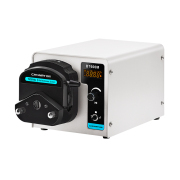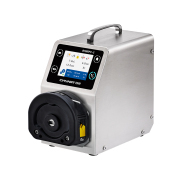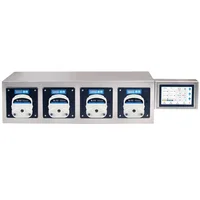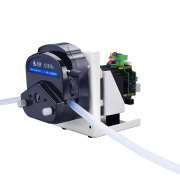Chonry Peristaltic Pump
Peristaltic Dispensing Pump
Peristaltic Dispensing Pump
There are various types of peristaltic dispensing pumps.peristaltic dispensing pump The most common is made of silicone rubber tubing. Silicone is a material made of hydrogen, oxygen, and carbon that is incredibly flexible and resistant to extreme conditions. Silicone rubber is also soft and flexible, making it an excellent choice for use in peristaltic pumps. The material is also resistant to most acids, bases, and solvents.
The most common model features a fixed occlusion and multiple motor speeds.peristaltic dispensing pump Fixed occlusion pumps keep the occlusion constant, while variable occlusion pumps vary with the thickness of the tube. The more occlusion a pump can produce, the higher its operating pressure. In contrast, fixed occlusion pumps are much more complex and can have several hundred to thousands of parts.
A peristaltic pump is an important tool for ensuring accurate drug dispensing. Accurate dispensing is vital in the development and delivery of high-quality pharmaceuticals. Leading-edge biotech "designer molecules" can be expensive, and accurate dispensing is essential. These high-potency compounds often require precise dispensing and aspiration. They are also vulnerable to shear, and accurate dispensing is critical.
Depending on the application, a peristaltic pump can be equipped with remote control options that make them easy to integrate into automated systems. These options include features such as reverse, speed, and prime/dispense functions. An integrated motor solution is also available with digital or analog interfaces. Various control accessories are available for these pumps, including foot switches and dispensing wands. The electric wiring diagram for the Liberty MDrive is shown below.
A peristaltic pump has two primary components: a rotor and a hose. A rotor sits in the center of the pump chamber and rotates in a circular motion. The rollers or shoes on the rotor cause compression and a vacuum, which draws more fluid into the pump's inlet. Depending on the application, a peristaltic pump can have a continuous or intermittent cycle.
Peristaltic pumps have many benefits. First and foremost, they are easy to use, have no check valves, and provide excellent suction capabilities for most liquids. They also offer sterile fluids, such as blood, serum, and vaccines. They also offer easy priming and a high degree of flexibility in volume and time. However, these features are not enough to justify the high cost of a peristaltic pump. In most cases, the only thing that makes a peristaltic pump a worthwhile investment is a little bit of knowledge.
A peristaltic pump can be divided into two types: low-pressure and high-pressure models. The high-pressure models can operate against pressures of up to 16 bars and can be used in continuous applications. They both employ rollers and shoes for dispensing and contain a lubricant in the casing to prevent abrasion. As with any peristaltic pump, the higher pressure ones require a high-quality controller.
Another type of peristaltic dispensing pump is the diaphragm pump. These pumps operate with suction and a one-way "milking" action. These pumps are more complicated than peristaltic pumps, however, and require more attention and technical knowledge to run. They are more effective in pumping chemicals than other types of pumps. You can choose the best type for your needs. A peristaltic pump will help you get the most out of your products.
0users like this.







